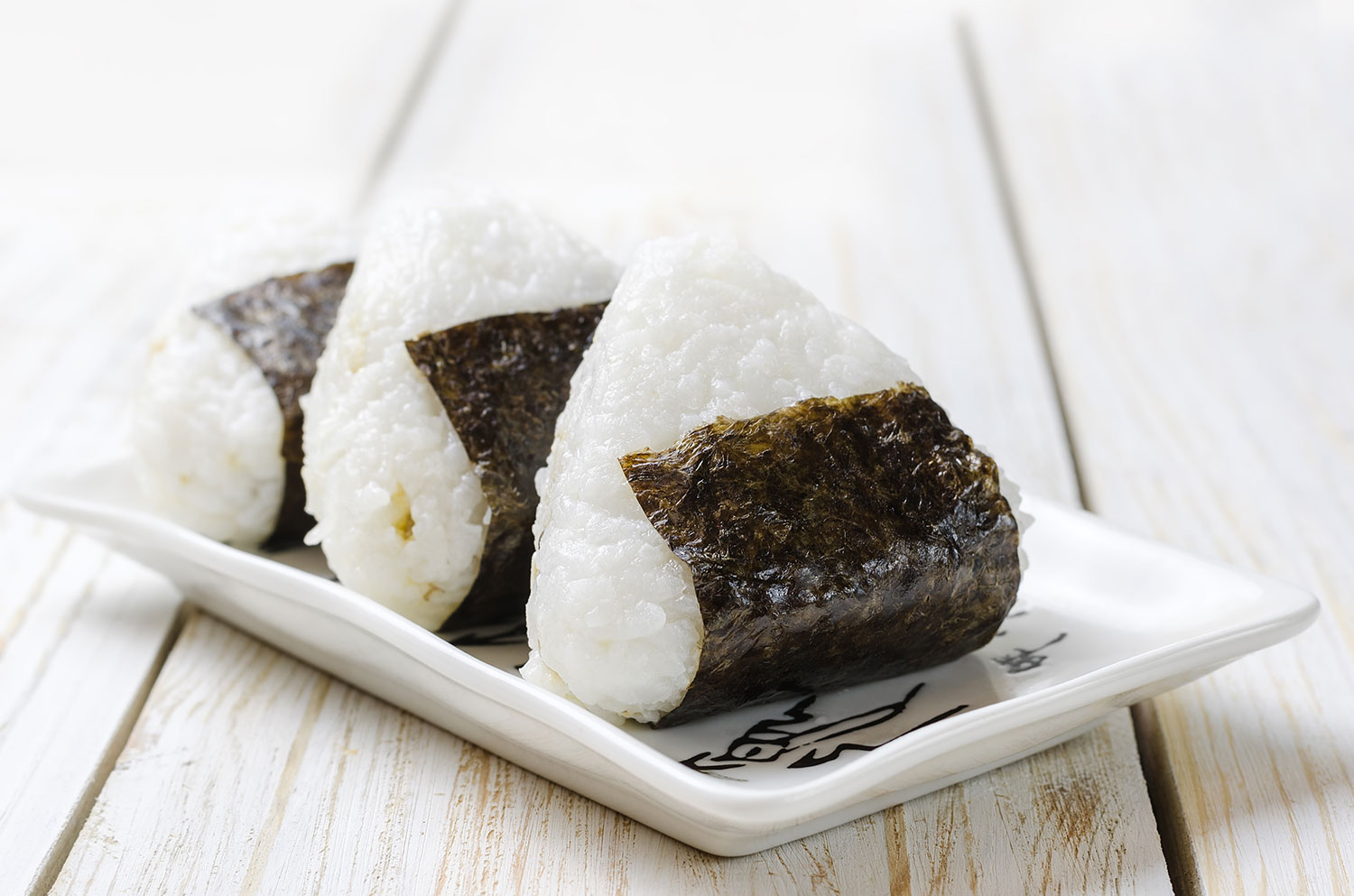

ONIGIRI OR JAPANESE RICE BALLS
Japanese rice balls – what is onigiri?
Similarly to rice itself, onigiri have been tied to traditional Japanese cuisine for ages. Some sources claim they date as far back as the 3rd century BC, to the Yayoi period, when simple grilled balls were made of sticky rice. In 11th century A.D., popular picnic food included rice snacks known as tonjiki, while in the Kamakura period, during war expeditions, samurai ate rice ball stuffed with umeboshi – pickled Japanese plums. However, it was not until the Edo period (1603–1868) that onigiri got their current shape and appearance, when a dark strip of nori appeared on the white rice balls to make it easier to grab the snack with your fingers. Due to their practical form, stuffed onigiri are perfect as a nutritious and convenient meal on a journey or at work. They also allow economical use of rice leftovers, kept fresh by the salt added to the dish.
How to make onigiri
The greatest secret of the onigiri recipe is properly cooked, sticky rice – preferably short- or medium-grain. It is its consistency that determines the final shape and durability of the snacks so its proper preparation is worth any time and effort. Rice must be rinsed with cool water 2–3 times until the water running through the sieve stops being cloudy, and then kept soaked for about 30–60 minutes. It is best to cook it in a thick-bottomed pot to prevent the grains from adhering to the bottom during a long cooking process in small quantities of water. The water level should not be more than 1.5 cm above the rice surface. Rice must be cooked for about 20 minutes from the moment it boils, and then left under the lid until absorbing all the water. To avoid damaging the rice grains, stir them with a wooden spoon by “cutting through” cooled down rice. To emphasise the taste of onigiri and to additionally keep the dish fresh, add a rice vinegar marinade, sugar and salt. In some variants of onigiri, cooked soya, azuki or bamboo shoots can be added to the rice to achieve different taste and consistency. Instead of white grains, you can also use brown rice, which gives the balls a slightly nutty aroma.
Onigiri stuffing
The rice mass is the base and the only mandatory ingredient of onigiri. The rest, that is the stuffing of the nutritious balls, basically only depends on the preferences and imagination of the cook. The most typical additions include marinated sweet & sour Japanese plums – umeboshi, grilled salmon, cod, and either fresh or dried tuna. Onigiri may also be stuffed with grilled or marinated vegetables, meat or deep-fried seafood. A luxurious version of the dish may include caviar but a daily snack can even be prepared using fried egg. Similarly, as in the case of sushi, contemporary Western variants of the Japanese treat also include sweet onigiri – with fruit or vegetables. Place these on a portion of rice flattened on the hand and delicately close the rice ball. It can take the shape of a flattened cone or cylinder. Finally, a small strip of algae – nori – is attached to traditional onigiri to serve as a practical “handle.”
How to eat onigiri
The convenient onigiri can be eaten almost always and everywhere. Exquisitely decorated, they are often an element of bento – the lunch boxes taken by Japanese children to school. They are perfect as a nutritious snack at work or on a journey. They are good both cold and hot – for example warmed up in a microwave oven. What to eat onigiri with? In more peaceful home conditions they can accompany miso soybean paste soup or a cup of traditional green tea.
Real onigiri are sold in virtually every Japanese city as typical snacks for those who are busy. Contrary to western fast foods, they are a rich source of nutrients and they effectively fight hunger during the day. Since the composition is simple and the recipe can be modified, you can also prepare them on your own, based on ingredients available in Poland. As an Oriental alternative to European sandwiches, onigiri is a perfect idea as both takeout and an interesting element of a party menu.























